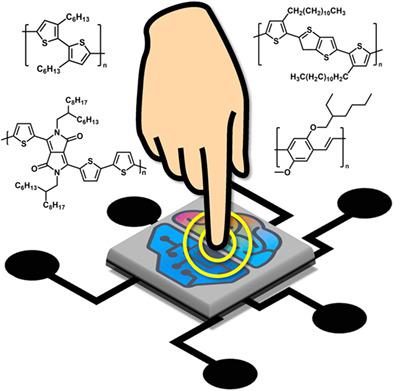当前位置:
X-MOL 学术
›
J. Polym. Sci.
›
论文详情
Our official English website, www.x-mol.net, welcomes your
feedback! (Note: you will need to create a separate account there.)
Neuromorphic bioelectronics based on semiconducting polymers
Journal of Polymer Science ( IF 3.9 ) Pub Date : 2021-08-30 , DOI: 10.1002/pol.20210502 HaeRang Lee 1 , Yousang Won 1 , Joon Hak Oh 1
Journal of Polymer Science ( IF 3.9 ) Pub Date : 2021-08-30 , DOI: 10.1002/pol.20210502 HaeRang Lee 1 , Yousang Won 1 , Joon Hak Oh 1
Affiliation

|
The recent development of neuromorphic devices with low power consumption and rapid response has been driven primarily by the growing demand for brain-inspired computing in human-like machines and human-machine interfaces. Remarkable progress has been made in developing neuromorphic bioelectronics that combine neuromorphic devices with electronic sensors. In this review, we provide an overview of semiconducting polymer-based neuromorphic devices and their applications in neuromorphic bioelectronics. We focus on recent advances in semiconducting polymer-based three-terminal artificial synapses that mimic neural communication behaviors. Various types of semiconducting polymers and synaptic platforms have been investigated, allowing significant improvement in their performance and expansion of their functionality. Proper selection of materials and device structures can help artificial sensory synapses to react to various external stimuli and to further modulate electrical signals. Advances in semiconducting polymer-based neuromorphic bioelectronics will accelerate the commercialization of human–machine interfacial systems, including intelligent prosthetics and implantable diagnostic devices.
中文翻译:

基于半导体聚合物的神经形态生物电子学
具有低功耗和快速响应的神经形态设备的最新发展主要是由于类人机器和人机界面对类脑计算的需求不断增长。在开发将神经形态器件与电子传感器相结合的神经形态生物电子学方面取得了显着进展。在这篇综述中,我们概述了基于半导体聚合物的神经形态器件及其在神经形态生物电子学中的应用。我们专注于模拟神经通信行为的基于半导体聚合物的三端人工突触的最新进展。已经研究了各种类型的半导体聚合物和突触平台,从而显着提高了它们的性能和扩展了它们的功能。正确选择材料和设备结构可以帮助人工感觉突触对各种外部刺激作出反应并进一步调制电信号。基于半导体聚合物的神经形态生物电子学的进步将加速人机界面系统的商业化,包括智能假肢和植入式诊断设备。
更新日期:2021-08-30
中文翻译:

基于半导体聚合物的神经形态生物电子学
具有低功耗和快速响应的神经形态设备的最新发展主要是由于类人机器和人机界面对类脑计算的需求不断增长。在开发将神经形态器件与电子传感器相结合的神经形态生物电子学方面取得了显着进展。在这篇综述中,我们概述了基于半导体聚合物的神经形态器件及其在神经形态生物电子学中的应用。我们专注于模拟神经通信行为的基于半导体聚合物的三端人工突触的最新进展。已经研究了各种类型的半导体聚合物和突触平台,从而显着提高了它们的性能和扩展了它们的功能。正确选择材料和设备结构可以帮助人工感觉突触对各种外部刺激作出反应并进一步调制电信号。基于半导体聚合物的神经形态生物电子学的进步将加速人机界面系统的商业化,包括智能假肢和植入式诊断设备。











































 京公网安备 11010802027423号
京公网安备 11010802027423号